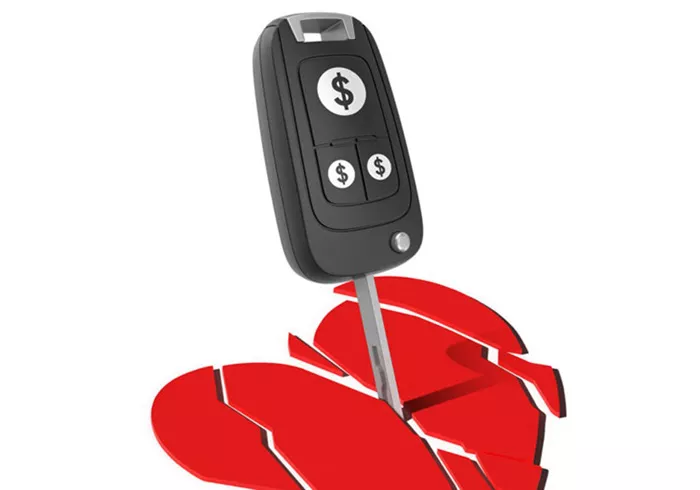For many Americans, cars were once an essential part of life, a symbol of independence and mobility. But recently, there’s been a noticeable shift in attitudes. Light-vehicle sales have dropped by about 1.7 million annually since 2016, showing that younger consumers are less interested in owning cars. Meanwhile, the average age of cars on the road has risen to 14.5 years, reflecting the financial strain many drivers face.
A significant factor contributing to this shift is the rising cost of owning a car. The U.S. Bureau of Labor Statistics reports that in 2024, the total cost of car ownership averaged a staggering $12,296, which is roughly 30% higher than it was a decade ago. One of the main drivers behind this increase is the price of new vehicles. The average cost of a new car is now $48,883, according to Cox Automotive. With these prices, many middle-income buyers are now priced out of new cars, causing the demand for used vehicles to rise, with used cars now averaging around $25,500.
Insurance Costs Are Adding to the Burden
Insurance is another major cost burden for drivers. According to Lexis-Nexis Risk Solutions, insurance premiums rose 10% in 2024, following a 15% increase the previous year. The average cost of full-coverage car insurance has now reached $2,680 annually, up 12% from June 2024, reports Bankrate. For many consumers, this is an additional financial strain that only worsens the feeling that cars have become an unaffordable luxury.
Depreciation and Underwater Loans
Depreciation is another issue that drivers are struggling with. In 2024, the average new vehicle loses around $4,680 in value every year during the first five years of ownership. Edmunds revealed that one in four car owners in the last quarter of 2024 was “underwater” on their car loans, meaning they owe more on the vehicle than it’s worth.
Complexity and Trust Issues with New Cars
The increasing complexity of modern cars is also contributing to the growing dissatisfaction. Turbocharged hybrid powertrains, screen-based controls, and advanced safety features are all adding to the confusion and mistrust many consumers feel towards newer vehicles. As Tom Wilkinson, a former GM employee, points out, cars may eventually have a fixed lifespan, with automakers potentially “bricking” them after 10 years or 150,000 miles, to avoid long-term liability.
Furthermore, the growing use of plastic parts in car engines, which automakers first adopted in the early 2000s for their lightness and recyclability, is raising concerns about durability. While plastics are cost-effective, they degrade over time due to the extreme heat in engine compartments, leading to potential failures. Car manufacturers, such as BMW and Volkswagen, have already settled lawsuits over engine failures caused by plastic components.
Costly Repairs and Planned Obsolescence
Another issue is the high cost of repairs. The use of “wet timing belts”—which are reinforced rubber belts that help synchronize engine parts—has been controversial. When these belts fail, they can release harmful debris into the oiling system, causing significant damage. The complexity of these components often makes repairs expensive and labor-intensive, with some parts buried deep within the machinery, increasing repair costs.
The average cost of a single repair now stands at $838 in 2024, up over 43% from six years ago, according to the U.S. Bureau of Labor Statistics. Many consumers are increasingly abandoning their cars due to these high costs, with automakers often opting for designs that prioritize efficient assembly over repairability.
Insurance Companies and Electric Vehicles
The rising costs of car repairs, including those for electric vehicles (EVs), are also driving up insurance premiums. For instance, insurers are hesitant to cover the costs of repairing electric vehicles like Tesla, where damaged structural components like “gigacastings” often require replacement rather than repair. In fact, an incident involving a Tesla Cybertruck showed a repair estimate of $57,879, with the car ultimately being sold to a salvage company for only $8,000.
The Road Ahead: Electric Cars and Vehicle Electrification
While these challenges are leading many consumers to rethink their relationship with traditional vehicles, there’s a shift happening in the automotive industry. Vehicle electrification is on the rise, and the cost of building electric cars is steadily decreasing. As the price of batteries continues to fall, electric vehicles will become more affordable and practical for the average consumer. With global EV sales increasing in 2024, it’s clear that the era of internal combustion engine (ICE) vehicles may soon come to an end.
For Americans who want to stay connected to their vehicles, a change is needed. Reducing the financial burden of ownership—especially through insurance and repair costs—could help restore the love affair with cars. However, the future seems increasingly electric, with EVs poised to lead the next generation of vehicles.
Conclusion
The financial burden of owning and maintaining a car, combined with rising insurance costs, is driving many Americans away from vehicles. This shift, however, may be part of a larger trend toward electric cars, which offer the potential for more affordable and sustainable transportation options. The future of car ownership in America may no longer be defined by traditional gas-powered vehicles but by a shift toward electrification.


